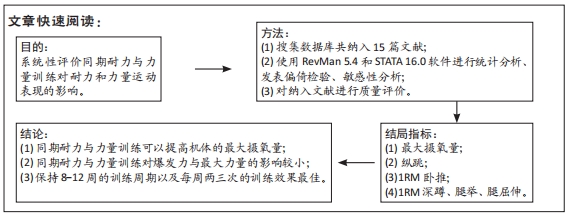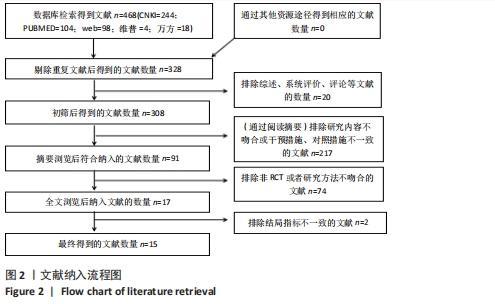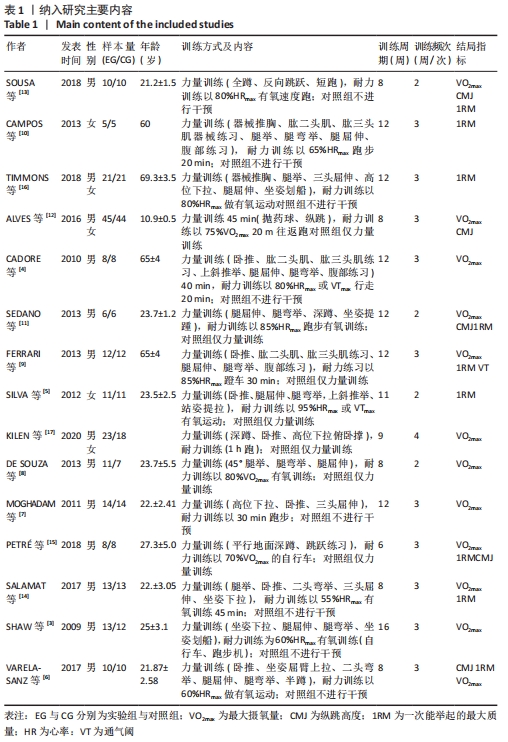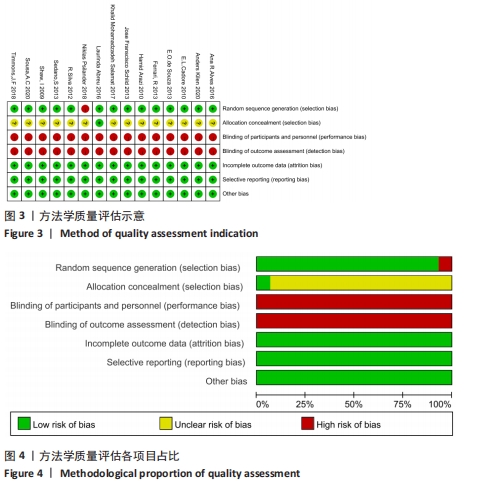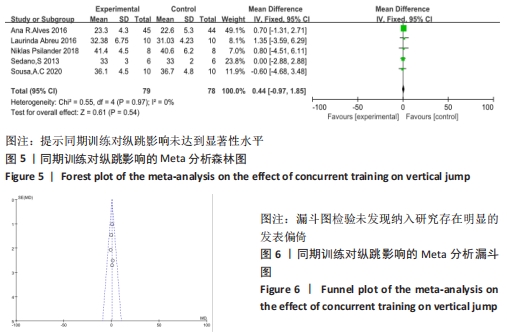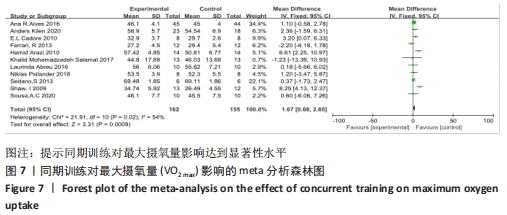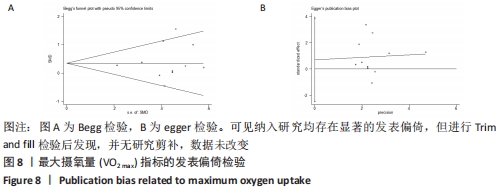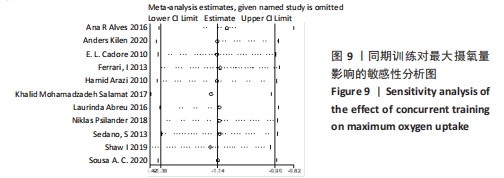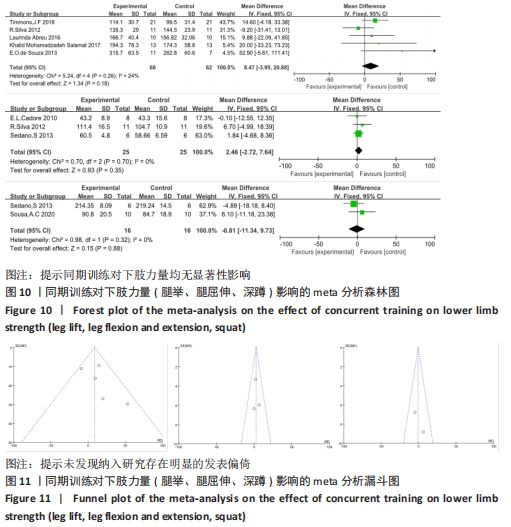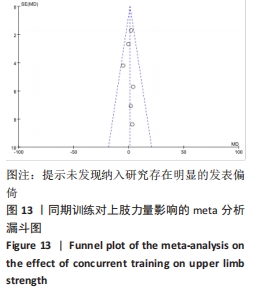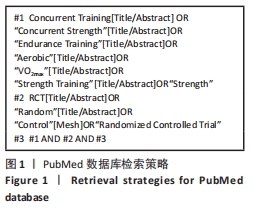[1] WILSON JM, MARIN PJ, RHEA MR, et al. Concurrent training:A Meta-Analysis examining interference of aerobic and resistance exercises. J Strength Cond Res. 2021;26(8):2293-2307
[2] 郜卫峰,冯鑫,顾大成.同期耐力与力量训练对长跑运动员跑步经济性及耐力表现相关指标影响的Meta分析[J].体育科学,2019,39(9):68-81.
[3] SHAW BS, SHAW I. Compatibility of concurrent aerobic and resistance training on maximal aerobic capacity in sedentary males. Cardiovasc J Afr. 2009;20(2):104-106.
[4] CADORE EL, PINTO RS, LHULLIER FL, et al. Physiological effects of concurrent training in elderly men. Int J Sports Med. 2010;31(10):689-697.
[5] SILVA RF, CADORE EL, KOTHE G, et al. Concurrent Training with Different Aerobic Exercises. Sports Med. 2012;33:627-634
[6] VARELA-SANZ A, TUIMIL JL, ABREU L, et al. Does Concurrent Training Intensity Distribution Matter? J Strength Cond Res. 2017;31(1):181-195.
[7] MOGHADAM MG, ARAZI H, SAMADI A, et al. Comparison of the effects of two different methods of concurrent training (continues&distinct)on body composition;aerobic power and muscle endurance in nonathlete male student. Electronic Physician. 2011;3(3):177.
[8] DE SOUZA EO, TRICOLI V, ROSCHEL H, et al. Molecular adaptations to concurrent training. Int J Sports Med. 2013;34(3):207-213.
[9] FERRARI R, KRUEL LF, CADORE EL, et al. Efficiency of twice weekly concurrent training in trained elderly men. Exp Gerontol. 2013;48(11):1236-1242
[10] CAMPOS ALP, DEL PONTE LS, CAVALLI AS, et al. Effects of concurrent training on health aspects of elderly women. Revista Brasileira de Cineantropometria e Desempenho Humano. 2013;15(4):437-447.
[11] SEDANO S, MARÍN PJ, CUADRADO G, et al. Concurrent training in elite male runners: the influence of strength versus muscular endurance training on performance outcomes. J Strength Cond Res. 2013;27(9):2433-2443.
[12] ALVES AR, MARTA CC, NEIVA HP, et al. Concurrent Training in Prepubescent Children: The Effects of 8 Weeks of Strength and Aerobic Training on Explosive Strength and V[Combining Dot Above]O2max. J Strength Cond Res. 2016;30(7):2019-2032.
[13] SOUSA AC, MARINHO DA, GIL MH, et al. Concurrent Training Followed by Detraining: Does the Resistance Training Intensity Matter? J Strength Cond Res. 2018; 32(3): 632-642.
[14] SALAMAT KM. The Effect of Two Types of Concurrent Training on Vo2max, Maximal Strength and Body Fat Percentage in Young Men. Report of Health Care. 2017;3(1):17-22.
[15] PETRÉ H, LÖFVING P, PSILANDER N. The Effect of Two Different Concurrent Training Programs on Strength and Power Gains in Highly-Trained Individuals. J Sports Sci Med. 2018;17(2):167-173.
[16] TIMMONS JF, MINNOCK D, HONE M, et al. Comparison of time-matched aerobic, resistance, or concurrent exercise training in older adults. Scand J Med Sci Sports. 2018;28(11):2272-2283.
[17] KILEN A, BAY J, BEJDER J, et al. Distribution of concurrent training sessions does not impact endurance adaptation. J Sci Med Sport. 2021;24(3):291-296.
[18] TANAKA K, WATANABE H, KONISHI Y, et al. Longitudinal associations between anaerobic threshold and distance running performance. Eur J App Physiol Occup Physiol. 1986;55(3):248-252.
[19] REICHERT T, COSTA RR, PREISSLER AAB, et al. Short and long-term effects of water-based aerobic and concurrent training on cardiorespiratory capacity and strength of older women. Exp Gerontol. 2020;142:111103.
[20] HUNTER G, DEMMENT R, MILLER D. Development of strength and maximum oxygen uptake during simultaneous training for strength and endurance. J Sports Med Phys Fitness. 1987;27(3):269-275.
[21] MIKKOLA J, VESTERINEN V, TAIPALE R, et al. Effect of resistance training regimens on treadmill running and neuromuscular performance in recreational endurance runners. J Sports Sci. 2011;29(13):1359-1371.
[22] NELSON AG, ARNALL DA, LOY SF, et al. Consequences of combining strength and endurance training regimens. Phys Ther. 1990;70(5):287-294.
[23] DUDLEY GA, FLECK SJ. Strength and endurance training. Are they mutually exclusive? Sports Med. 1987;4(2):79-85.
[24] 鲁成阳.同期训练对羽毛球专项大学生力量、耐力素质影响的实验研究[D].武汉:武汉体育学院,2020.
[25] 李荣辉.力量与耐力不同组合训练方式对下肢爆发力的影响[D].西安:西安体育学院,2014.
[26] DUDLEY GA, DJAMIL R. Incompatibility of endurance- and strength-training modes of exercise. J Appl Physiol (1985). 1985;59(5):1446-1451.
[27] GARCÍA-PINILLOS F, LAREDO-AGUILERA JA, MUÑOZ-JIMÉNEZ M, et al. Effects of 12-Week Concurrent High-Intensity Interval Strength and Endurance Training Program on Physical Performance in Healthy Older People. J Strength Cond Res. 2019;33(5): 1445-1452.
[28] HÄKKINEN K, ALEN M, KRAEMER WJ, et al. Neuromuscular adaptations during concurrent strength and endurance training versus strength training. Eur J Appl Physiol. 2003;89(1):42-52.
[29] SALE DG, JACOBS I, MACDOUGALL JD, et al. Comparison of two regimens of concurrent strength and endurance training. Med Sci Sports Exerc. 1990;22(3):348-356.
[30] 于洪军.论同期力量和耐力训练及其在竞技体育中的训练策略[J].体育科学,2014, 34(2):18-33.
[31] GARCÍA-PALLARÉS J, SÁNCHEZ-MEDINA L, CARRASCO L, et al. Endurance and neuromuscular changes in world-class level kayakers during a periodized training cycle. Eur J Appl Physiol. 2009;106(4):629-638.
[32] 王玮. 同期训练对肌肉力量、爆发力及体成分的影响[D].太原:中北大学,2016.
[33] 赵启昌. 同期力量和速度训练对普通体育高考生下肢快速力量影响的研究[D].北京:北京体育大学,2020.
[34] 张海鹏,马继政,徐盛嘉.耐力和力量同时训练计划的设计[J].运动精品,2020, 39(12):87-88.
[35] HICKSON RC. Interference of strength development by simultaneously training for strength and endurance. Eur J Appl Physiol Occup Physiol. 1980;45(2-3):255-263.
[36] 马继政,胡澄,乔箐.力量和耐力组合训练分子产生的干扰机制和训练学上的对策[J].体育科技文献通报,2012,20(6): 14-19+31.
[37] 江健康.浅析耐力训练与力量训练相结合的训练模式[J].体育科技文献通报,2011, 19(8):24-25.
[38] 单磊.抗阻训练在有氧耐力运动项目中的影响[J].运动,2012(24):48-49+10.
|
